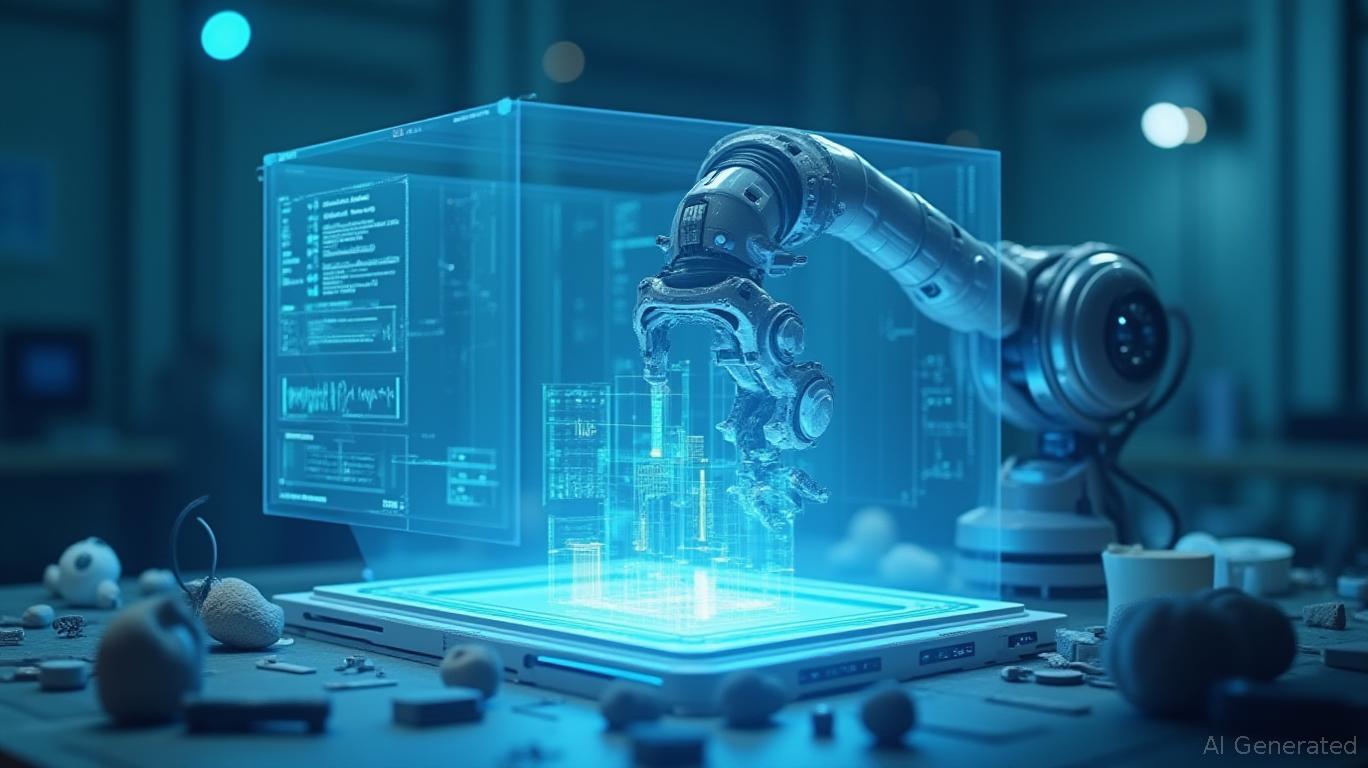Meta's V-JEPA 2: The World Model Revolutionizing Robotics and Autonomous Systems

Meta's V-JEPA 2, a self-supervised world model, is emerging as a game-changer in the race to build intelligent machines that understand and interact with the physical world. With its breakthroughs in visual reasoning, predictive capabilities, and zero-shot robotic control, this model is primed to disrupt industries from aerospace to logistics. For investors, the question is clear: Can V-JEPA 2's technical edge translate into near-term commercial scalability—and where should capital be deployed?
The Technical Edge: Why V-JEPA 2 Stands Out
At its core, V-JEPA 2 leverages 1.2 billion parameters and a dual-stage training regime to master physical dynamics. The first stage—pre-training on 1 million hours of video—teaches the model to recognize objects, predict motion, and anticipate actions without human-labeled data. The second stage, using just 62 hours of robot data, fine-tunes its ability to simulate outcomes of hypothetical actions. The result? A system that can plan robot movements in unfamiliar environments with 65–80% success rates on tasks like pick-and-place operations, all without prior training on those environments.
This self-supervised efficiency is V-JEPA 2's killer feature. Competitors like Google's Genie or World Labs' models require vast labeled datasets or task-specific training, which slows deployment. V-JEPA 2, by contrast, can generalize from internet-scale video, slashing costs and accelerating ROI for adopters.
Applications Across Industries: Where the Value Lies
The model's capabilities have direct implications for three high-value sectors:
- Aerospace & Autonomous Flight
- Catalyst: V-JEPA 2's ability to predict physical anomalies (via benchmarks like IntPhys 2) could be critical for autonomous flight systems. For instance, drones or spacecraft could use the model to anticipate equipment failures or navigate unpredictable environments.
ROI Play: Companies like Boeing or SpaceX might integrate V-JEPA 2 into safety systems, reducing manual oversight costs.
Logistics & Manufacturing
- Catalyst: Warehouse robots using V-JEPA 2 could handle unseen objects and environments, slashing the need for retraining. Meta's internal pilots already demonstrate this in pick-and-place tasks.
ROI Play: Logistics giants like Amazon or FedEx could deploy these robots faster and cheaper than rivals.
Automotive & Robotics
- Catalyst: The model's visual subgoal planning (e.g., breaking tasks into steps) aligns with autonomous vehicle navigation and consumer robotics.
- ROI Play: Companies like Tesla or Boston Dynamics might embed V-JEPA 2 into next-gen robots for dynamic obstacle avoidance.
Meta's Competitive Moat: Video-Based World Models
While rivals focus on text or static images, Meta's advantage lies in video-first training. V-JEPA 2's exposure to millions of hours of dynamic scenes gives it a deeper grasp of motion and causality than models trained on static data. This is evident in benchmarks like CausalVQA (60% accuracy vs. 95% for humans), where it outperforms competitors by margins that could grow as
iterates.Moreover, Meta's open-source strategy is a de facto partnership engine. By releasing V-JEPA 2 on GitHub and Hugging Face, the company invites developers to build industry-specific applications, creating a flywheel of innovation. Early adopters in robotics or aerospace could emerge as key partners, accelerating commercialization.
Near-Term Catalysts for Investors
- Benchmark Advancements: Improvements on IntPhys 2 or MVPBench (which tests against subtle physical errors) will validate V-JEPA 2's reliability for safety-critical systems.
- Pilot Announcements: Look for partnerships in 2025 with robotics firms or logistics providers deploying V-JEPA 2 in warehouses or factories.
- Multimodal Extensions: Meta's roadmap includes audio and tactile integration, expanding the model's use cases in industrial settings.
Investment Opportunities: Where to Deploy Capital
- Meta's Infrastructure Stack: Meta's shares could benefit as enterprises license its world model or adopt its cloud services.
- GPU/Cloud Providers: NVIDIA (CUDA for training), AWS (robotics-as-a-service), and Microsoft (Azure Robotics) stand to gain from compute demands.
- Robotics Startups: Firms like Boston Dynamics (for dynamic environments) or iRobot (consumer space) could see valuation uplifts if they integrate V-JEPA 2.
Conclusion: Why Now is the Inflection Point
V-JEPA 2 is not just a technical milestone—it's a scalability revolution. Its self-supervised architecture and zero-shot control lower barriers to entry in robotics, while open-source adoption ensures rapid iteration. For investors, the next 12–18 months will be critical: catalysts like pilot programs or multimodal upgrades could unlock enterprise adoption.
The path forward is clear: back Meta's AI infrastructure plays, bet on GPU/cloud leaders, and watch for robotics firms that leverage V-JEPA 2's physics intuition. The world of embodied AI is here—and V-JEPA 2 is leading the charge.
Risk Warning: Regulatory scrutiny of AI safety and data privacy could delay adoption. Monitor Meta's progress on closing performance gaps with human benchmarks (e.g., IntPhys 2) for signs of sustained leadership.

Comments
No comments yet